Cute Little Animals Cute Little Animalsperson Easy to Draw

If you ever need a dose of cuteness, then one surefire way to get it is by looking at pictures of baby animals. Playful puppies, curious kittens, fluffy chicks and charming bunnies are adorably heart-melting. But along with these obviously cute critters, have you seen the other, lesser-appreciated sweet animals?
From the oceans and skies to the jungles, farmyards and everywhere in between, there are baby animals to fawn over all over — pun intended! Read on and be prepared for cuteness overload.
Meerkats
Just look at this cute little meerkat pup! Baby meerkats are born underground in litters of up to eight siblings. They then join a wider meerkat family known as a mob. When they're born, they weigh just a teeny-tiny 25 grams and need a bit of help getting by, as they remain deaf, blind and hairless for a few days to a couple weeks.
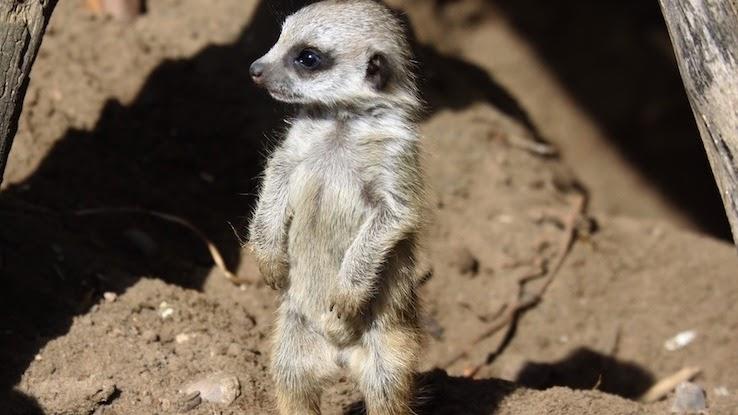
After around nine weeks, the mother starts to wean the pups. In just under two years, the meerkat babies become mature enough to begin having cute babies of their very own.
From meerkats to, well, actual cats. Whether they're big ol' tigers or itty-bitty housecats, any kind of baby feline is adorable. With their sweet mewing sounds and their tiny paws, it would be hard for your heart not to melt.

And what's even cuter than a kitten? That would be a kindle, which is the collective noun for a litter of kittens. Although kittens are born blind, they all start with blue eyes, which sometimes change to green or hazel. They also have a perfect sense of smell to find their mother's milk.
Dogs
We couldn't mention kittens without, of course, talking about puppies. Just take a look at this puppy's face! He gives a whole new meaning to "puppy dog eyes." How could you stay mad at that?

Before the naughty stage, puppies are born deaf, blind and toothless and spend up to 20 hours a day sleeping. Newborn puppies also can't poop — the mother licks their behinds to help them. So, spare a thought for the mother of the largest litter. That title belongs to a Neapolitan Mastiff from England who gave birth to a litter of 24.
Foxes
More cute canines? This time we have baby foxes, which are called kits. Fox litters are, on average, larger than domestic dog litters, usually numbering up to 11. Similar to cats, foxes aren't pack animals. After the babies leave their homes, or dens, at around seven months old, they roam about alone.
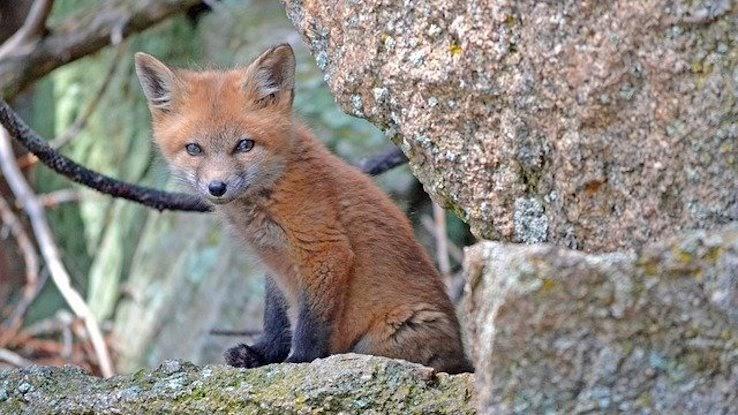
Fox varieties can be found on every single continent apart from Antarctica. Like cat and dog babies, they're also very playful. The tiniest fox breed in the world is the fennec fox. Fennec fox kits can weigh an adorable 40 grams — a little less than a golf ball.
Squirrels
Baby squirrels are also called kits. A mother squirrel usually gives birth to a maximum of eight kits, and she weans them after around three months. After this, they never usually roam more than a couple of miles away from where they were born.

There are more than 200 species of squirrels, with three main categories: tree squirrels, ground squirrels and flying squirrels. The smallest squirrel breed is the African Pygmy Squirrel, which has babies as tiny as a newborn mouse. A final fun squirrel fact: A group of squirrels is appropriately called a scurry!
Penguins
We can't get enough of this cute baby penguin! Before they get their distinctive black and white "tuxedos," baby penguins, or chicks, are covered in brown, white or grey fluff to keep them warm.

Penguin moms and dads are monogamous and pair for the whole mating season. Emperor penguins only lay one egg, while other penguin breeds have two. It's the male penguin's job to keep the egg warm in his fat folds while mom goes hunting for food. She'll bring back a tummy full of fish to regurgitate for the male and chick. Tasty.
Seahorses
Here's another daddy with big responsibilities. The seahorse father is the one that gets pregnant and gives birth to the babies, which number thousands at a time after contractions of up to 12 hours.

These cute little critters come firing out, collectively known as fry (disappointingly, not seafoals). They are then left to fend for themselves, drifting along and eating tasty plankton. It's a good thing the tiny babies are born in large numbers, because their small size and vulnerability mean they are easy prey, with fewer than one in a thousand surviving into adulthood.
Horses
While adult horses are seen as strong and serious, baby horses are just seriously cute and clumsy. Foals start walking and even running with the herd within a matter of hours, but are still classed as foals until they are around a year old when their name changes to yearling.

Fillies (girl foals) and colts (boy foals) are famously playful young babies, but the separation process is particularly hard for them. They often miss their mom and the rest of the herd if they are moved, so they need lots of extra companionship and attention.
Hippopotamuses
"Hippopotamus" comes from the Greek word for "horse." The babies act very foal-like too — sweet and playful until they grow up into strong (and quite scary) adult hippos.

A baby hippo, or calf, is usually 110 pounds, although a baby pygmy hippo can be as small as a human baby. They depend on their moms, suckling until around a year. As hippos can spend up to 18 hours underwater each day, baby hippos can suckle underwater too, even though they can't swim. So the calves kind of just bob along or tread the shallows until they learn.
Rhinos
Hippos' rough-skinned relatives, the rhinos, only have one baby at a time, or occasionally twins. And look how cute they are! Around 145 pounds of cuteness to be precise, which quickly starts growing — they're the second-largest mammals on Earth.

A rhino mom stays pregnant for around a year and a half. Then when the calf is born, it closely bonds to its mother, mimicking her behavior and never leaving her side. The baby sticks around for about three years before setting out on its own to start a new rhino family.
Llamas
This adorable baby llama looks like something out of a kids' cartoon. So soft and fluffy! Baby llamas are called crias, and they are born weighing about 20 pounds before they grow to over 70 inches tall. Llamas are confused with alpacas, but they are significantly taller than their cousins.

They are very friendly and smart creatures, and despite popular belief, only spit when highly agitated — not just randomly at humans. Here's another fun llama fact: Their poop is completely odorless and quite useful. The Ancient Incas used to use llama poop as fuel.
Giraffes
Baby giraffes are the tallest babies in the animal kingdom and manage to wobble to a standing position within an hour — and that's after falling several feet to the ground when their mothers give birth.

Once it stands, a giraffe calf is around six feet tall, weighing 150 pounds. The mother nurses, cleans and feeds the baby leaves that it can't reach. She'll then teach it how to graze — something giraffes do for up to 18 hours a day.
Bears
Isn't this baby bear adorable, just chillin' in the tree? No wonder soft toys have been modeled on bears for centuries. They're very playful and extremely curious. It's hard to imagine they grow up to be one of the most ferocious creatures on the planet.

Baby bears stay with their very affectionate and protective mothers for around two years, which gives them time to mature and learn essential hunting and protection skills. The young bear may not wander too far and often dens with its mother in the winter for another three or four years.
Apes
The ape family's members are the closest living relatives to humans. They include chimps, gorillas and adorable orangutans like the one pictured here. Their human-like quality makes them seem so cute, and the babies act a lot like human babies.

Baby orangutans, also called infants, cry when they are hungry or scared. They smile at their mothers, and they have reactions such as joy and surprise. Again, like human babies, they nurse from their mother until the age of two to three. They continue to nest with the mom until they're around seven or eight years old.
Skunks
Cute baby skunks are called kits. The mother is pregnant for around two months, and the babies are born in litters of up to 10. They're born helpless, with their eyes sealed for about three weeks. They stop suckling from their mom after around two months. Then, after a year, they're ready to have their own kits.
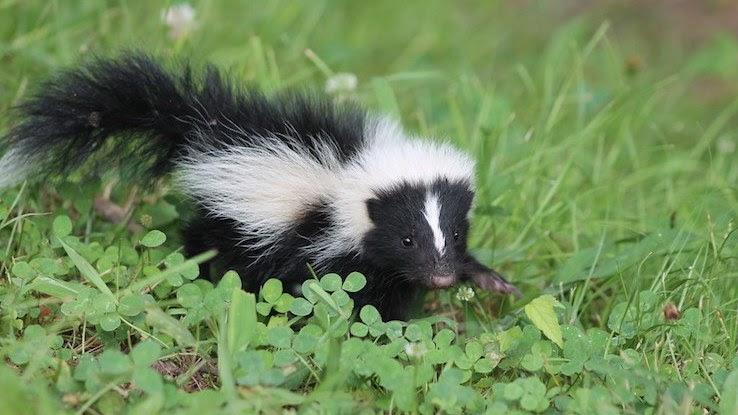
Skunks have to pack a lot into their little lives, as they only live for around three years. However, if they are kept as pets, which is becoming increasingly popular, they can live for up to around eight years.
Seals
Just look at this sweet seal sunbathing! Seal moms have one baby each year. The babies are called pups, because they kind of look and act a little like dogs of the sea.
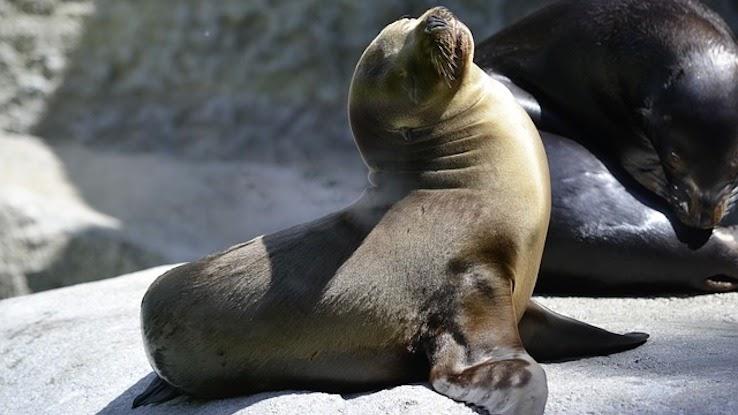
The little pups live on land, eating crabs, snails and other sea life until their downy waterproof fur grows, which takes around a month. Their mothers stay with the pups the whole time, and as the odd crustacean and mollusk isn't enough to keep the moms nourished, their fat reserves are converted to energy for their bodies.
Goats
Baby goats, or kids, are adorably clumsy and curious. They take their first steps a few moments after being born. When they are still suckling from the mother goat, called a nanny or doe, she hides them under rocks or in other spots to keep them safe from predators.

Goats are quite smart. You can teach them to come when called and recognize their names. They have around the same lifespan as dogs and get on with other animals really well, so they make great pets (as long as they don't eat your whole garden!).
Snails
Chances are you don't think much about snails, and if you do, it's probably in a negative sense when they munch your garden plants. But, these critters produce very cute-looking babies. The mother can have hundreds of eggs. Thankfully for her, only around 50 babies successfully hatch. They're born with almost transparent, very soft shells.

Baby snails aren't vulnerable for long. They mature pretty fast and live up to seven years. Giant African land snails, which are native to warmer climates and are popular as pets, can live to an impressive 15 years.
Ostriches
Ostriches are the world's largest birds. Their eggs go into a communal nest, storing around 60 future baby ostriches. The adults, male and female, take turns sitting on the eggs until they hatch about 40 days after being laid.

When baby ostriches hatch, they're the same size as a large chicken. If predators approach them, the female shields her baby while the male causes a distraction so that the predator chases him instead. After around six months, the baby chick has reached its full adult height.
Rabbits
Rabbits have multiple litters each year, with around nine babies, or kits, per litter. They're born pretty helpless and stay in the nest, lined with grass and their mom's fur. The momma pretty much leaves the kits alone so as not to draw attention to the nest. She does wake the kits up at mealtimes, though.

Once the kits emerge, they join their considerable family outside. Rabbits have a very sophisticated communication system. Tiny twitches and facial expressions help them tell other bunnies how they're feeling, where food is, if there are predators and so on.
Raccoons
Baby raccoons are known as kits or cubs, and the mother and baby collectively are called a nursery. A typical raccoon litter is born in the summer months and consists of around four babies.

Raccoon kits stay in their den for two months and are weaned at around seven weeks old. At about 12 weeks old, the kits start to roam away from their mothers for whole nights at a time. Raccoons are seen as pests by some. But, when they're tamed, their behavior is quite cat-like, and some people even keep them as pets.
Squids
You probably weren't expecting to see squids on this list, but you can't deny this little fella looks adorable! A mother squid releases an astonishing 100,000 eggs, and most of them hatch after a couple of weeks. The babies, or fry, are then in a larval stage before they're classed as juveniles and then adult squids after a few weeks more.

The squid population on Earth is increasing quickly. Scientists believe the reason is that global warming is speeding up squid metabolism and growth.
Lizards
When baby lizards hatch, they are pretty much independent, eating what an adult would eat, such as ants and other insects. Baby lizards are called hatchings, and the adorable hatchling pictured is the offspring of a horned lizard.

So-called "horny toads" are native to North America, but they are not kept as pets due to their very specialized diet. They have some incredible defense mechanisms to scare off predators in the wild, including the sudden inflation of their bodies by gulping down air. They can also squirt blood from their eyes. Not so cute!
Alligators
The female alligator lays up to 90 eggs, which she hides under a covering of vegetation while they incubate for a few months. When they emerge, baby alligators are only a couple of feet long.

The sex of the babies is determined by the temperature of the nest. The colder the eggs are, the more females there'll be, and vice versa. American alligators live in freshwater, slow-moving rivers in the United States, from North Carolina to the Rio Grande.
Elephants
Doesn't this baby elephant look cute and fancy-free trotting along? A baby elephant is called a calf, and when it's born it stands at an adorable 30 inches tall. Baby elephants can't see so well when they're born, but they recognize their mothers through smell, touch and sound.

Around 99% of calves are born at night and may have cute curly black or red hair on their foreheads. Elephant mothers have to stay nourished and hydrated because a hungry calf can guzzle a few gallons of milk per day.
Turtles
Baby turtles, or hatchlings, don't have a very smooth start in life. They're born in nests that their mothers make on the beach. They hatch from their shells, dig their way out of the sand and must face an obstacle course of uneven sand, driftwood, rocks and other beach debris — dodging predators too — to finally reach the water.

Once the hatchlings successfully make it to the waters, they begin what's called a "swimming frenzy" to get away from dangerous, predator-packed shorelines. This frenzy may last for several days and varies in intensity and duration among species.
Pufferfish
Sticking with the sea, this cute little critter is a baby pufferfish, or pufferfish fry. Just look at its sweet smile! Pufferfish, also known as blowfish or balloon fish, release between three and seven eggs at a time, and the light eggs float on the water's surface until they hatch around a week later.
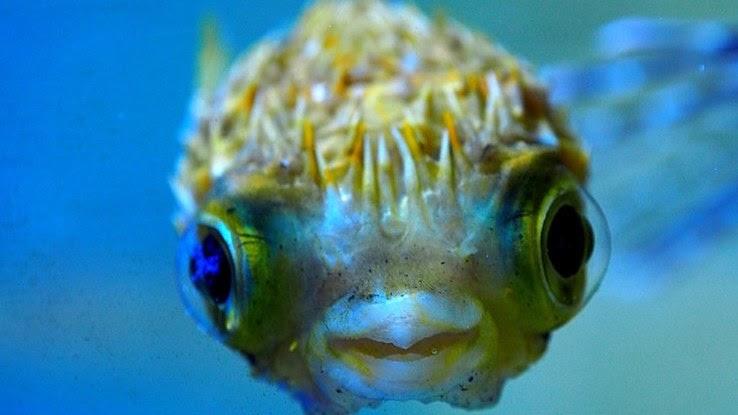
Some pufferfish can grow up to several feet in length, and despite looking pretty adorable, they're one of the deadliest creatures on the planet if eaten. However, they avoid getting eaten by puffing themselves up to three times their normal size when they encounter predators.
Sloths
Sloths are pretty cute as adults, but the babies are even cuter — especially as they are free from the mold that adult sloths get covered in! Baby sloths don't have a different name than adults; they're simply called "baby sloths." They're born weighing about 10 ounces and have fur already. Their eyes are open, and they even have the ability to climb.
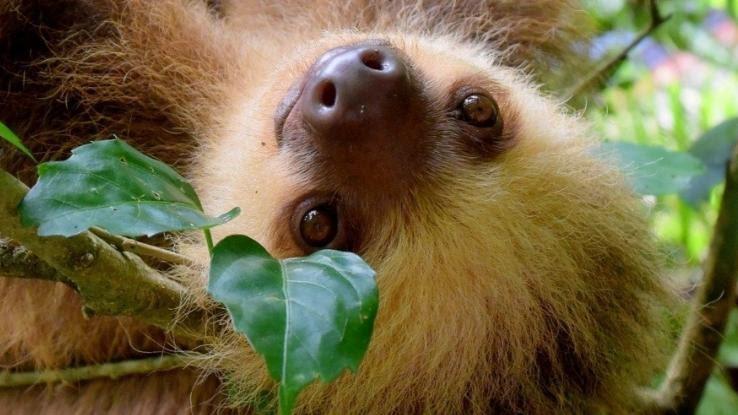
They cling to their mothers' fur for the first few weeks after birth. Sloths spend their entire lives usually living in the same tree, and because they move so slowly, they can live long lives of around 30 years.
Warthogs
Young warthogs are called piglets and are born weighing a couple of pounds. The piglets live with their mother in their nest, which is called a sounder. Piglets are weaned when they reach four months old, and they officially become mature at 20 months of age.

Female warthogs tend to stay with their mothers when they become adults, while male warthogs tend to go off on their own to mate. Warthogs can live to be almost 20 years old and inhabit the grasslands and wooded areas of Africa.
Anteaters
The anteater, or ant bear, is related to the sloth. Mother anteaters only have one baby, or pup, at a time. A pup rides on its mother's back after she bends down for him to climb on. She can't pick him up herself because of her long claws!

While some smaller anteater varieties are the size of a squirrel, giant anteaters can grow to several feet long. Anteaters are known for their specialized tongues, which are long and thin like spaghetti to get into anthills and other insect nests. Some anteater tongues are 24 inches long.
Source: https://www.life123.com/lifestyle/surprisingly-cute-baby-animals?utm_content=params%3Ao%3D740009%26ad%3DdirN%26qo%3DserpIndex&ueid=d879a610-49e0-450c-8f3e-1cb9ea2fc5de
Post a Comment for "Cute Little Animals Cute Little Animalsperson Easy to Draw"